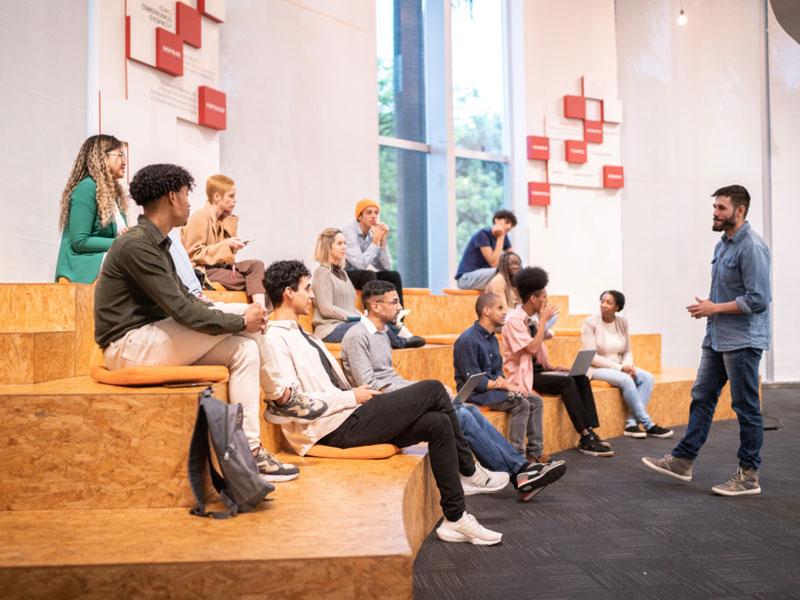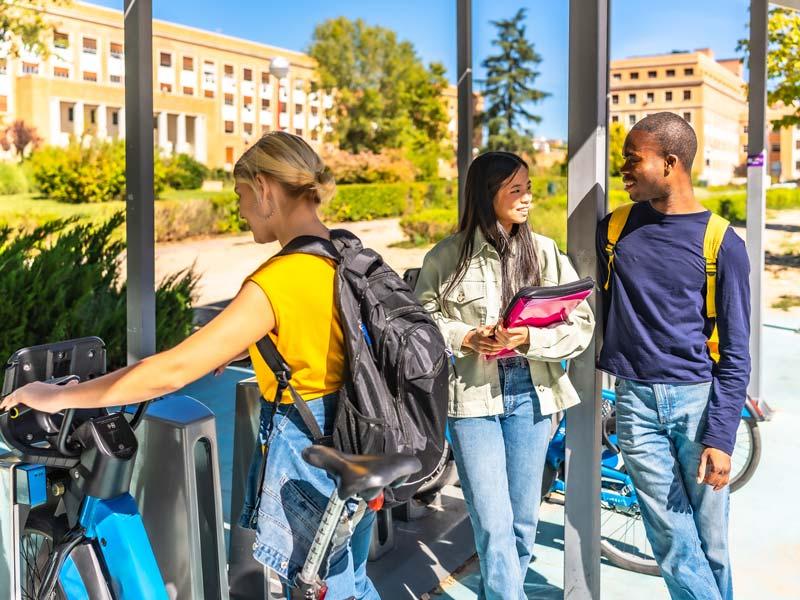Once defined by lecture halls and sprawling quads, universities are redrawing the traditional campus blueprint. As remote learning, digital technologies and changing student expectations reshape higher education, institutions must transform their physical spaces to support their evolving role: serving as vital hubs for in-person collaboration while embracing the shift toward digital learning environments.
More than that, they have an opportunity to reimagine their campuses in a way that both optimises space and aligns it with their desired outcomes. When was the last time you walked into a space that sparked your best ideas? Or felt that a room made you more focused, connected or inspired? Our spaces influence how we think, learn and interact – and nowhere is that more important than on a university campus.
For university leaders, the challenge is strategic: What is the ideal footprint for a future-ready campus? And what is the potential for an optimised built environment to foster student belonging, boost faculty collaboration and amplify research breakthroughs?
For estate teams, the focus shifts to execution – how to translate these ideas into practical, efficient and future-proof infrastructure.
They certainly have space to play with. In my conversations with university leaders and also if you look at current statistics, a figure that comes up repeatedly is that 30-60 per cent of campus space is typically underutilised.
With estates being one of their most significant assets, this presents a tremendous opportunity: by reimagining how space is used and “right-sizing” their estates, universities can not only reduce operational costs dramatically but also create more dynamic and flexible environments that better serve students, faculty and research initiatives.
Step one: the low-hanging fruit
The key question, then, is how to bring the big vision to life in practical terms. The great news is that getting started is easier than you might think and doesn’t involve the installation of any complicated hardware or software. Most universities already have systems in place across their campuses that can offer insights into space usage, from wi-fi routers to security systems, people counters that measure footfall and, in some cases, light sensors that detect occupancy.
Rather than relying on hypotheses, institutions can gather and analyse anonymised data from these systems to pinpoint under and over-utilised spaces and optimise accordingly – whether by reducing energy consumption in underused areas or redesigning spaces for greater flexibility and multi-purpose use.
For example, many institutions have found that students are increasingly seeking places to gather and collaborate, with libraries often serving as key hubs for both individual study and group discussions. This overflow from libraries spills into canteens, where communal tables are occupied by study groups, leaving those who simply want to grab a quick bite without seating.
This shifting dynamic raises important questions for universities: How can they create more communal spaces that meet evolving student expectations? And what does the future of the library look like when it’s no longer just a quiet place for reading but also a space for research, collaboration and discussion?
Universities that take a data-driven approach to reassessing space usage – rather than relying on assumptions – will find it much easier to make informed, strategic decisions.

Step two: operational integration
After collecting the data, the next step is integrating data-gathering interfaces with other campus systems, such as cleaning schedules or timetabling systems. As the core of a university’s operations is the balance between curriculum demand and space availability, the latter is where the real value can be unlocked.
Historically, institutions have relied on timetabling and scheduling systems to plan room usage – but the reality doesn’t always match. By analysing actual utilisation data, universities can address discrepancies between scheduled and actual usage, allowing them to make different and more informed decisions moving forward.
Not only can these insights impact academic planning, but they can also allow universities to maximise campus space for commercial use.
Another important opportunity to improve the efficiency and sustainability of their existing spaces lies in integrating HVAC systems with intelligent building management platforms. This connection enables precise, data-driven control over heating, cooling and ventilation, ensuring that energy isn’t wasted on unoccupied spaces.
This is what Morgan State University hopes to achieve. Phase one of its 10-year smart campus plan in partnership with Siemens includes implementing a series of modernisation upgrades to the university’s HVAC, security and fire and life safety systems with a focus on energy efficiency, resiliency and sustainability.
These measures will not only drive guaranteed savings of approximately $10 million but also create a more comfortable and responsive environment – a campus that autonomously adapts to the needs of students and faculty in real time.
Aligning the vision with the physical space
By switching from a hypothesis-driven to a data-driven approach and connecting data points from different university systems, universities can put themselves in a position where they can have more strategic conversations about how their role as institutions is evolving and ensure their physical estate aligns with their vision and values for the future.
Do we need to fundamentally repurpose parts of the campus? Should we rethink how spaces are grouped? Do we really need a new building, or can we improve the utilisation of the ones we already have?
Space optimisation isn't just a facilities challenge – it's also a chance to strengthen the university's broader impact. By reimagining the physical estate as a dynamic enabler of student experience, research excellence and community engagement, universities can unlock a new era of impact.
At Siemens, our role is to help universities move from complexity to simplicity. This means helping university leadership answer the big, strategic questions and estates teams deliver on the institution’s vision in practical terms, to create a campus that works for students and faculty using the least resources possible.


comment